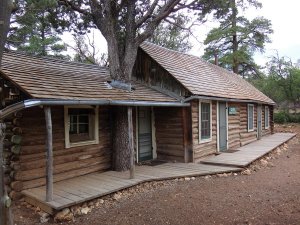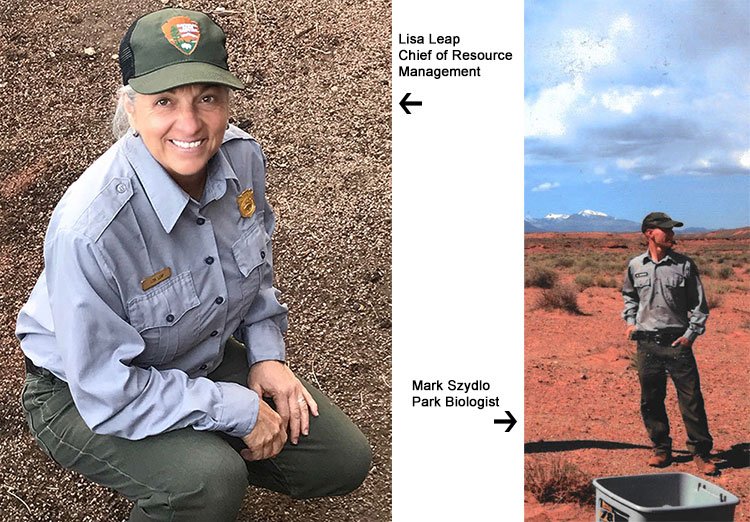Lisa Leap Receives Appleman-Judd-Lewis Award
Lisa Leap, Chief of Resource Management, recently received the Intermountain Region’s prestigious Appleman-Judd-Lewis Award for excellence in cultural resource management. Lisa has garnered funding for and led her staff in completing dozens and dozens of important cultural resource-related projects.
A small recent sampling includes Ethnography Overview and Assessments, a Collection Management Plan, National Register nominations for SUCR’s Apollo Space Program Training Site and WACA’s Ranger Cabin, and a Historic Furnishing Study for Ranger Cabin. Preservation treatments for many maintained archeological sites at WACA and WUPA involved NPS staff and youth corps crews such as Ancestral Lands – Southwest Conservation Corps and other project partners have included the Museum of Northern Arizona.
Lisa is a great communicator, converting National Historic Preservation Act compliance curmudgeons into employees who understand and value cultural compliance processes. She builds consensus for thinking about impacts to archeological sites, historic buildings, cultural landscapes, etc. Lisa and her team present interpretive programs to share cultural resource stories with the public. She has a leadership role in the annual Flagstaff Festival of Science, a 10-day celebration, and arranges for FLAG resources staff to conduct hikes, talks, and demonstrations each year.
Lisa’s nomination by her peers will now advance her to consideration for the agency-wide National Park Service Appleman-Judd-Lewis Award. We wish you luck, Lisa!
Biologist Mark Szydlo Announced as Nominee for 2020 Director’s Award
Also on track to be considered for a national award is Biologist Mark Szydlo. He was recently announced as the Intermountain Region’s nominee for the 2020 Director’s Award for Natural Resource Management in a Small Park.
Mark initiated and oversaw a program to detect and monitor listed birds at Flagstaff Area National Monuments, which was later expanded to other NPS units. He designed and implemented a project to monitor for threatened Mexican Spotted Owl (MSO) calls and vocalize the threatened Western Yellow-billed Cuckoo and the endangered Southwestern Willow Flycatcher.
In the project’s first phase, Mark trained, equipped, and supported six NPS units (Canyon de Chelly, Chiricahua, Coronado, Navajo National Monuments, Glen Canyon National Recreation Area, and Saguaro National Park) to survey for MSO using portable recorders. This represented a new method for this type of research and the demonstration went well.
Recorders were deployed at 163 locations at those units, with recordings spanning a total of 3,205 nights. Thus far, 54,675 hours of audio data have been analyzed. A total of 4,623 recorded MSO calls were confirmed, representing both new occurrence records and continuing evidence of MSO habitat occupancy.
Recently, the number of NPS sites participating in this has ballooned from the initial six to include nine more this year (Arches, Carlsbad Caverns, Mesa Verde, Guadalupe Mountains, and Rocky Mountain National Parks, Colorado, Tonto, Gila Cliff Dwellings National Monuments, and Valles Caldera National Preserve).
Mark’s methods and training have expanded the ability of the NPS to monitor these threatened and endangered bird species. We wish you luck too, Mark, and hope your work will be recognized with the service-wide award!


 It’s Hot Out There! Protecting Visitors and Our Flagstaff Area National Monument in the Hot Summer Months
It’s Hot Out There! Protecting Visitors and Our Flagstaff Area National Monument in the Hot Summer Months